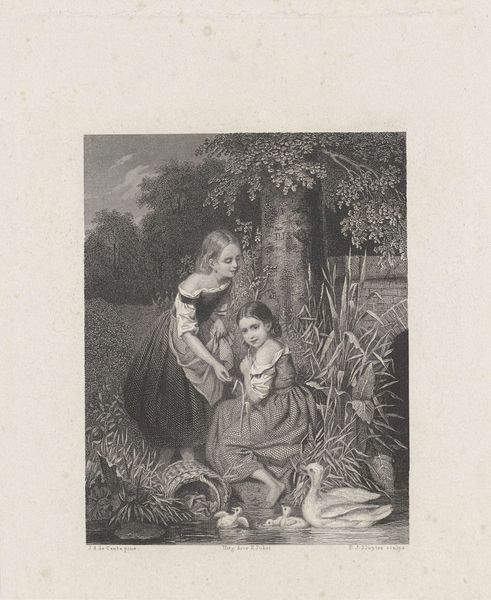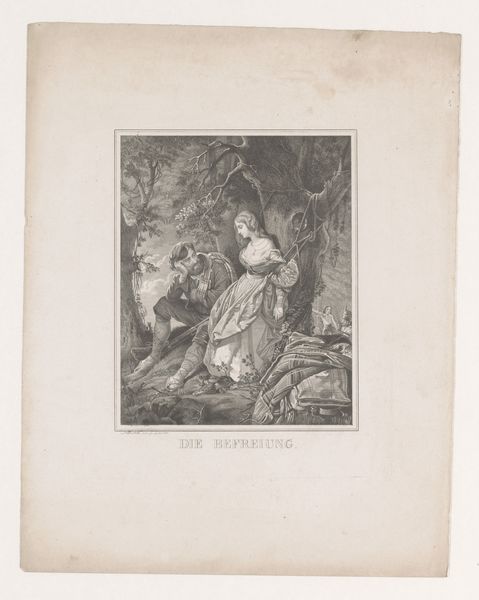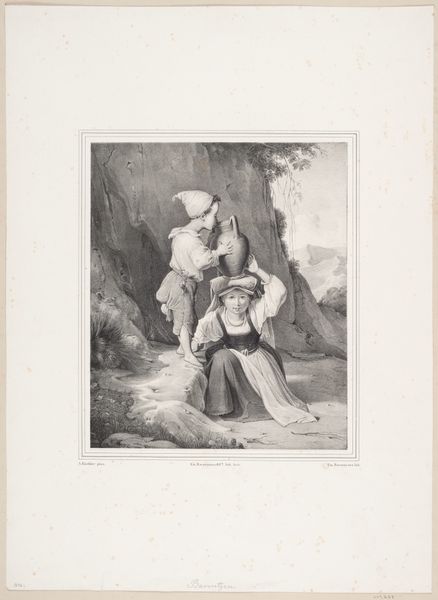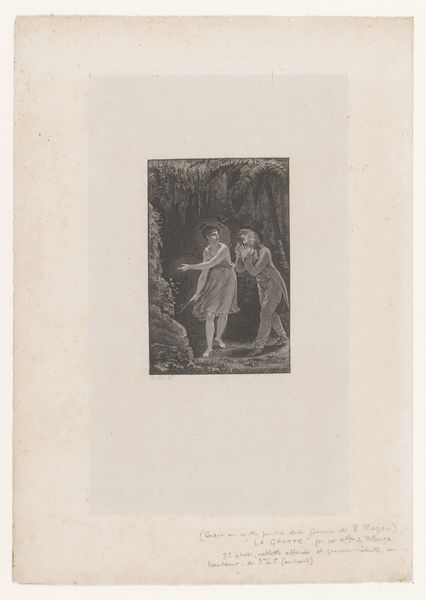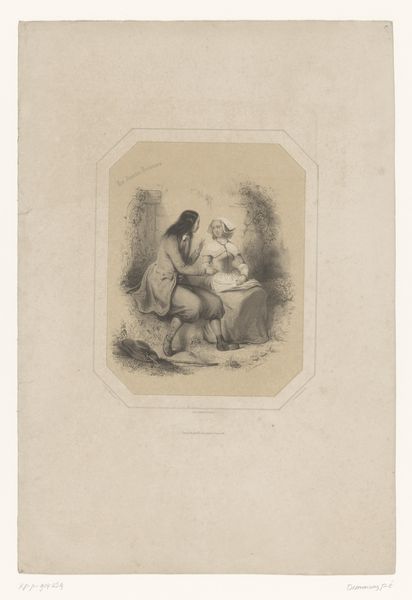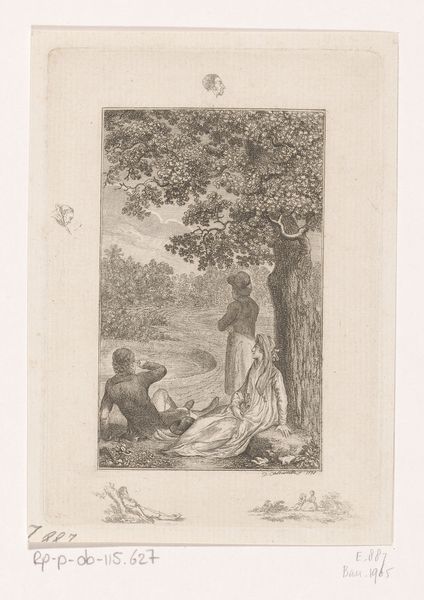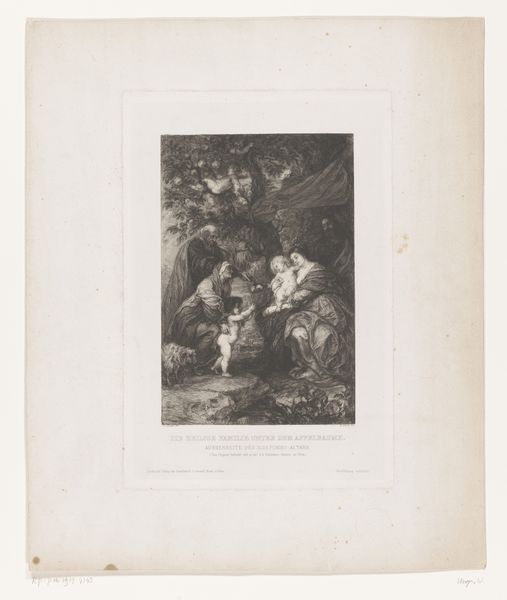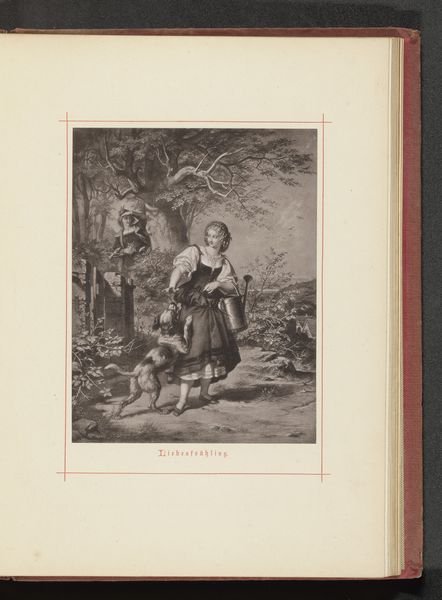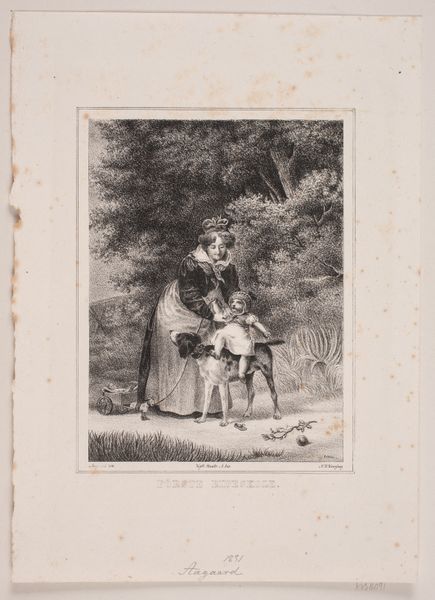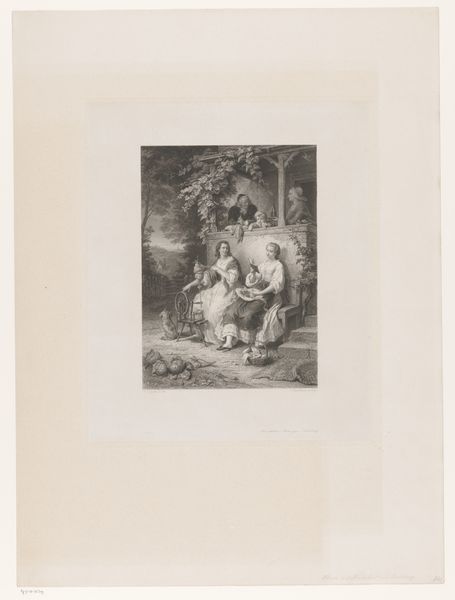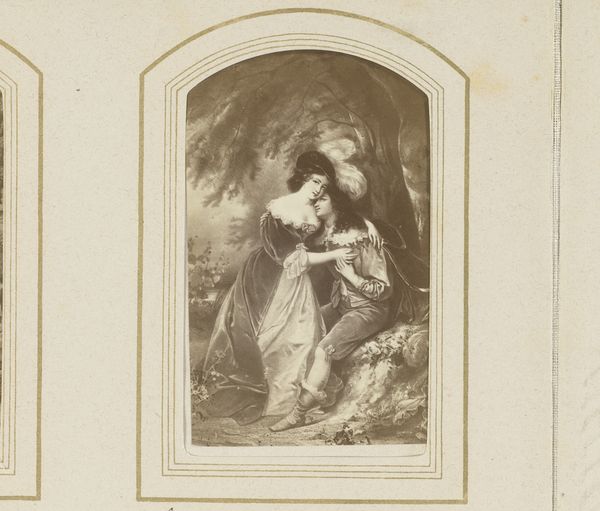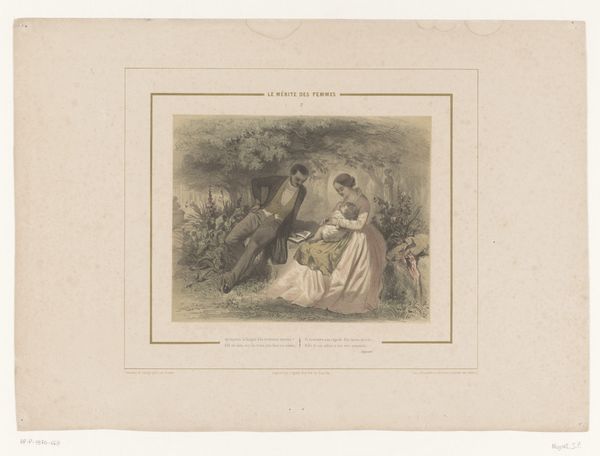
print, engraving
# print
#
landscape
#
figuration
#
romanticism
#
genre-painting
#
engraving
Dimensions: height 505 mm, width 390 mm
Copyright: Rijks Museum: Open Domain
Curator: What a charming scene. This is "Girls with Duck and Ducklings by the Water" created around 1847 by Johan Hendrik Hoffmeister. It’s an engraving, a printmaking technique that was very popular at the time. Editor: It feels so…wholesome. There's a real gentleness in the way the light falls on the figures and the animals. It’s idyllic in a way that evokes a certain nostalgia. The ducklings bobbing on the water is a quintessential symbol of youth. Curator: Absolutely. Hoffmeister was working within the Romantic tradition, a movement that prioritized emotion and the beauty of nature. Genre painting was really having its day. I am also interested in the way such works supported middle class morality. Editor: It's interesting to note the absence of overt religious or mythological symbols, something we saw less of as time went on. Here, it is replaced by domestic innocence; the girls are almost mirroring the maternal bond with the ducklings, wouldn’t you agree? The image carries weight; it speaks to simpler times or rather the yearning for simplicity, rendered permanent through the artistic medium. Curator: You’ve highlighted something essential about the broader social role of this image. Such genre scenes in art offer glimpses into cultural values and class aspirations. Prints such as these provided a cost-effective method of distribution. That increased circulation helped propagate social mores and visual culture widely, shaping expectations. Editor: It is worth mentioning the ducks, however, and the archetypes associated. Historically they suggest domesticity, purity, safety, guidance. This image offers a complex visual text. Curator: It truly does! Looking closer at the technique, it is important to remember this isn't spontaneous. Creating tonal variation using only carved lines speaks to a developed skill. Hoffmeister manipulated lines, space and the reflective surface of the water so carefully. It's a perfect merging of sentimental values and the techniques to display them widely in the public sphere. Editor: I leave feeling strangely comforted, as though returning from a brief pastoral interlude, thanks to the Hoffmeister’s composition and symbology. Curator: Precisely. It encapsulates the charm of the period, simultaneously sentimental and politically charged.
Comments
No comments
Be the first to comment and join the conversation on the ultimate creative platform.
